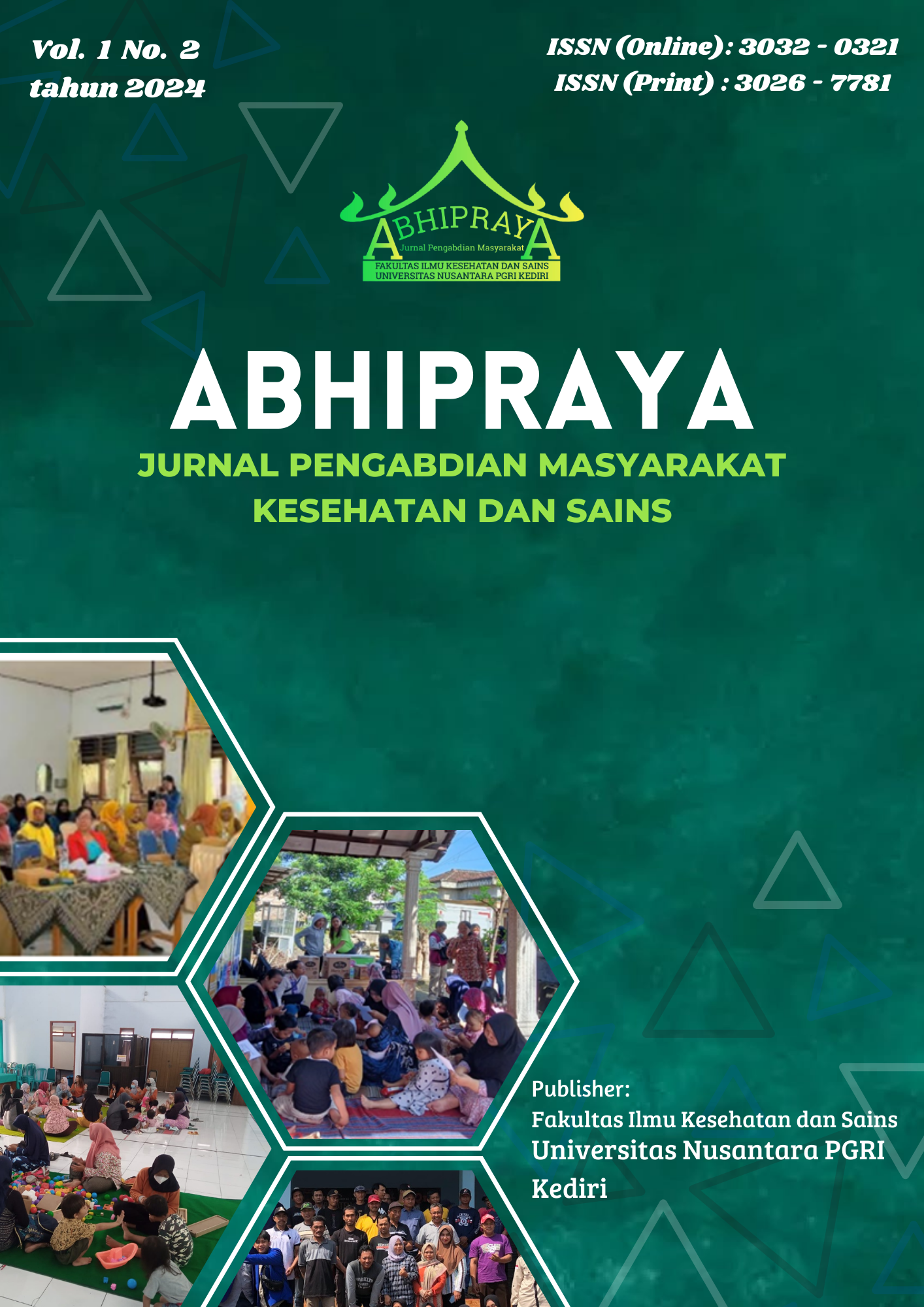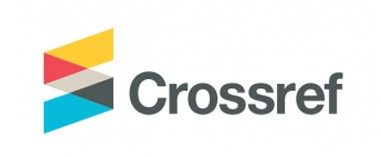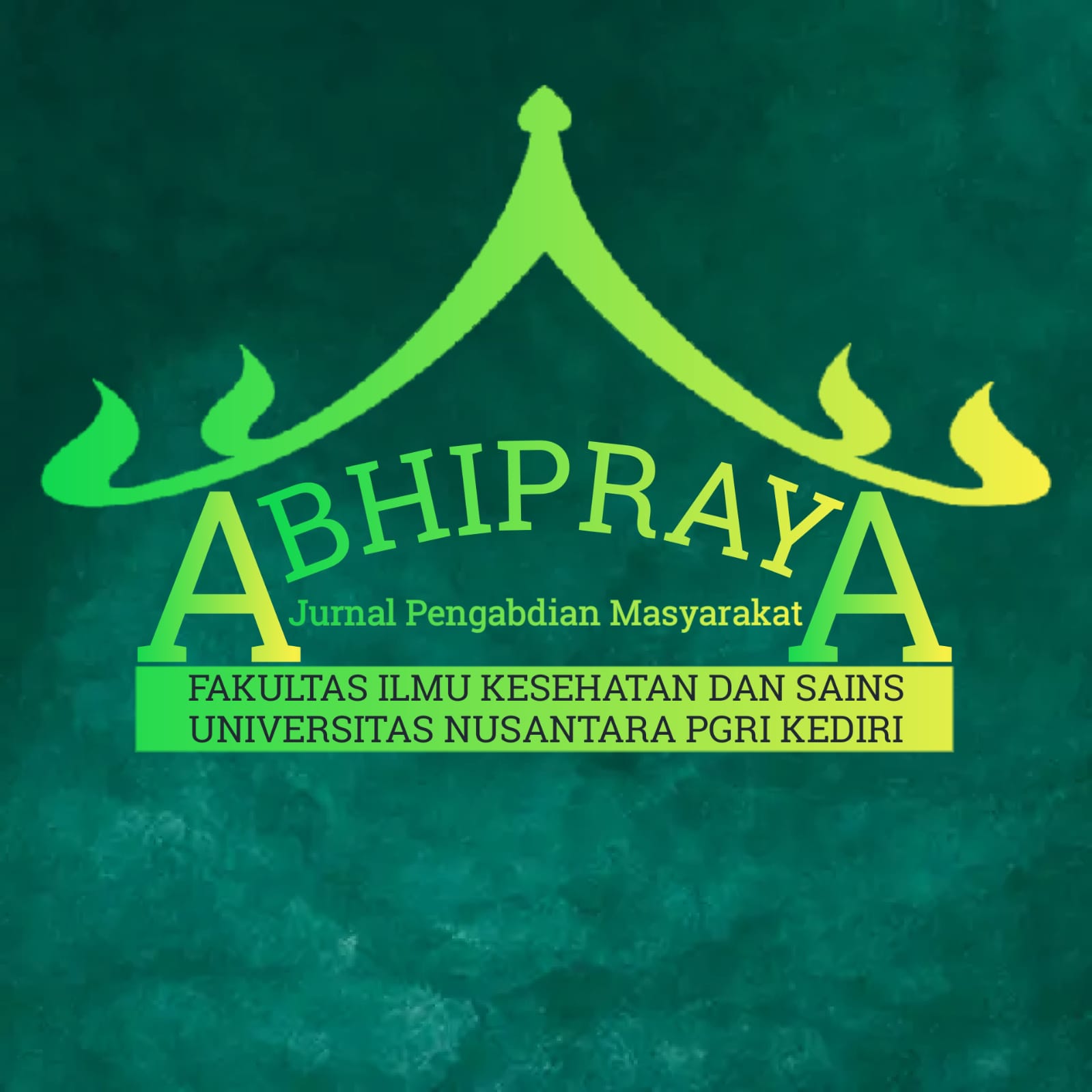Pelatihan Pembuatan Nata De Leri Sebagai Pemanfaatan Limbah Air Cucian Beras
DOI:
https://doi.org/10.29407/abhipraya.v1i2.22613Keywords:
Rice washing water, Nata de Leri, Community Service.Abstract
Indonesia is included in the top 10 countries with the highest level of rice consumption in the world. The amount of rice consumed causes the used rice washing water to be wasted and rarely used because it has no economic value. Water used for rice washing that is disposed of for free contains organic compounds and minerals that are useful for the human body, one of which is carbohydrates. The high carbohydrate content in the water used for rice washing meets the requirements for the growth of Acetobacter xylinum bacteria that can be used in making nata. Nata de leri utilizes fermented rice laundry water using other additives such as ZA (Ammonium Sulfate), granulated sugar, and kitchen vinegar. Indonesian people usually use nata as dessert or can also be used as canned food mixed with other fresh fruits. Rice washing water that is used by reprocessing is expected to create economic value and potentially bring profits. Community Service (PKM) lecturers of the Science Education Postgraduate program at Muhammadiyah Metro University are carried out to increase the capacity of the community in processing through an understanding of making nata de leri using used rice washing water.
Downloads
References
Childs, N. (2023). Economic Research Service: U.S. Departement of Agriculture. United States Government. https://www.ers.usda.gov/topics/crops/rice/rice-sector-at-a-glance/. 25 September 2023 (07.29)
Hairuddin, R., Yamin, M., & Riadi, A. (2018). Respon Pertumbuhan Tanaman Anggrek (Dendrobium SP.) Pada Beberapa Konsentrasi Air Cucian Ikan Bandeng dan Air Cucian Beras Secara In Vivo. Perbal : Jurnal Pertanian Berkelanjutan, 6(2), 23-29.
Harianingsih, Maharani, F., & Kusumaningrum, M. (2016). Pemberdayaan Ibu Rumah Tangga Melalui Pelatihan Pembuatan Nata de Leri di Kelurahan Banyumanik Semarang. Jurnal Pengabdian Masyarakat Unwahas, 1(1), 17-22. http://dx.doi.org/10.31942/abd.v1i1.1707
Hastuti, M., Andriyani, M., Wiedyastanto, A., Savitskaya, D., Gisyamadia, & Margono. (2017). Pemanfaatan Ekstrak Kecambah Kacang Hijau Sebagai Sumber Nitrogen Alternatif Dalam pembuatan Nata De Lerry. Prosiding Seminar Nasional Sains dan Teknologi, 1(1), 1-5. http://dx.doi.org/10.36499/psnst.v1i1.1898
Laily, M. F. A., & Palupi, H. T. (2019). Mempelajari Pemanafaatan Air Cucian Beras (Leri) Pada Proses Pembuatan Nata De Leri. Jurnal Teknologi Pangan, 10(1), 35-40. https://doi.org/10.35891/tp.v10i1.1466
Layudha, S. I., Rahma, A. A., Riyanto, A., & Ratnani, R. D. (2015). Pengaruh Penambahan Gliserol Terhadap Kualitas Bioplastik Dari Air Cucian Beras. Prosiding Seminar Nasional Sains dan Teknologi, 1(1), 72-76. http://dx.doi.org/10.36499/psnst.v1i1.1128
Lidyana, N., Suyani, I. S., Herlambang, T., Suud, M., Zuhro, M. U., & Oktaviani, D. A. (2022). Peningkatan Jiwa Entrepreneur Melalui Pelatihan Pemanfaatan POC (Pupuk Organik Cair) Air Cucian Beras. Lumbung Inovasi: Jurnal Pengabdian Kepada Masyarakat. 7(4), 676-680. https://doi.org/10.36312/linov.v7i4.986
Majesty, J., Argo, B. D., & Nugroho, W. A. (2015). Pengaruh Penambahan Sukrosa dan Lama Fermentasi Terhadap Kadar Serat Nata Dari Sari Nanas (Nata de Pina). Jurnal Keteknikan Pertanian Tropis dan Biosistem, 3(1), 80-85.
Maryam, A. (2020). Analisis Karakteristik Mutu Nata De Leri Dengan Variasi Konsentrasi Gula Pasir Sebagai Sumber Karbon. Cross-border, 3(2), 252-260.
Putri, S. N. Y., Syaharani, W. F., Utami, C. V. B., Safitri, D. R., Arum, Z. N., Prihastari, Z. S., & Sari, A. R. (2021). Pengaruh Mikroorganisme, Bahan Baku, dan Waktu Inkubasi Pada Karakter Nata. Jurnal Teknologi Hasil Pertanian, 14(1), 62-74. https://doi.org/10.20961/jthp.v14i1.47654
Safitri, M. P., Caronge, M. W., & Kadirman, K. (2018). Pengaruh Pemberian Sumber Nitrogen dan Bibit Bakteri Acetobacter Xylinum Terhadap Kualitas Hasil Nata De Tala. Jurnal Pendidikan Teknologi Pertanian, 392), 95-106. https://doi.org/10.26858/jptp.v3i2.5521
Tallei, T. E., Marfuah, S., Abas, A. H., Abram, A. A. D. P., Pasappa, N., Anggini, P. S., Soegoto, A. S., Wali, F., & Emran, T. B. (2022). Nata As A Source of Dietary Fiber With Numerous Health Benefits. Journal of Advanced Boitechnology and Experimental Therapeutics, 5(1), 189-197. https://doi.org/10.5455/jabet.2022.d107
Zaura, A., Iswadi, Samingan, Suprianto, & Wardiah. (2023). Pengaruh Proporsi Volume Air Cucian Beras Dalam Air Kelapa terhadap Sifat Organoleptik Nata de Coco. Jurnal Biologi Edukasi, 15(1), 1-9.
Downloads
Published
Issue
Section
License
Authors who publish with this journal agree to the following terms:
- Copyright on any article is retained by the author(s).
- The author grants the journal, right of first publication with the work simultaneously licensed under a Creative Commons Attribution License that allows others to share the work with an acknowledgment of the work’s authorship and initial publication in this journal.
- Authors are able to enter into separate, additional contractual arrangements for the non-exclusive distribution of the journal’s published version of the work (e.g., post it to an institutional repository or publish it in a book), with an acknowledgment of its initial publication in this journal.
- Authors are permitted and encouraged to post their work online (e.g., in institutional repositories or on their website) prior to and during the submission process, as it can lead to productive exchanges, as well as earlier and greater citation of published work.
- The article and any associated published material is distributed under the Creative Commons Attribution-ShareAlike 4.0 International License




















